Applied art types
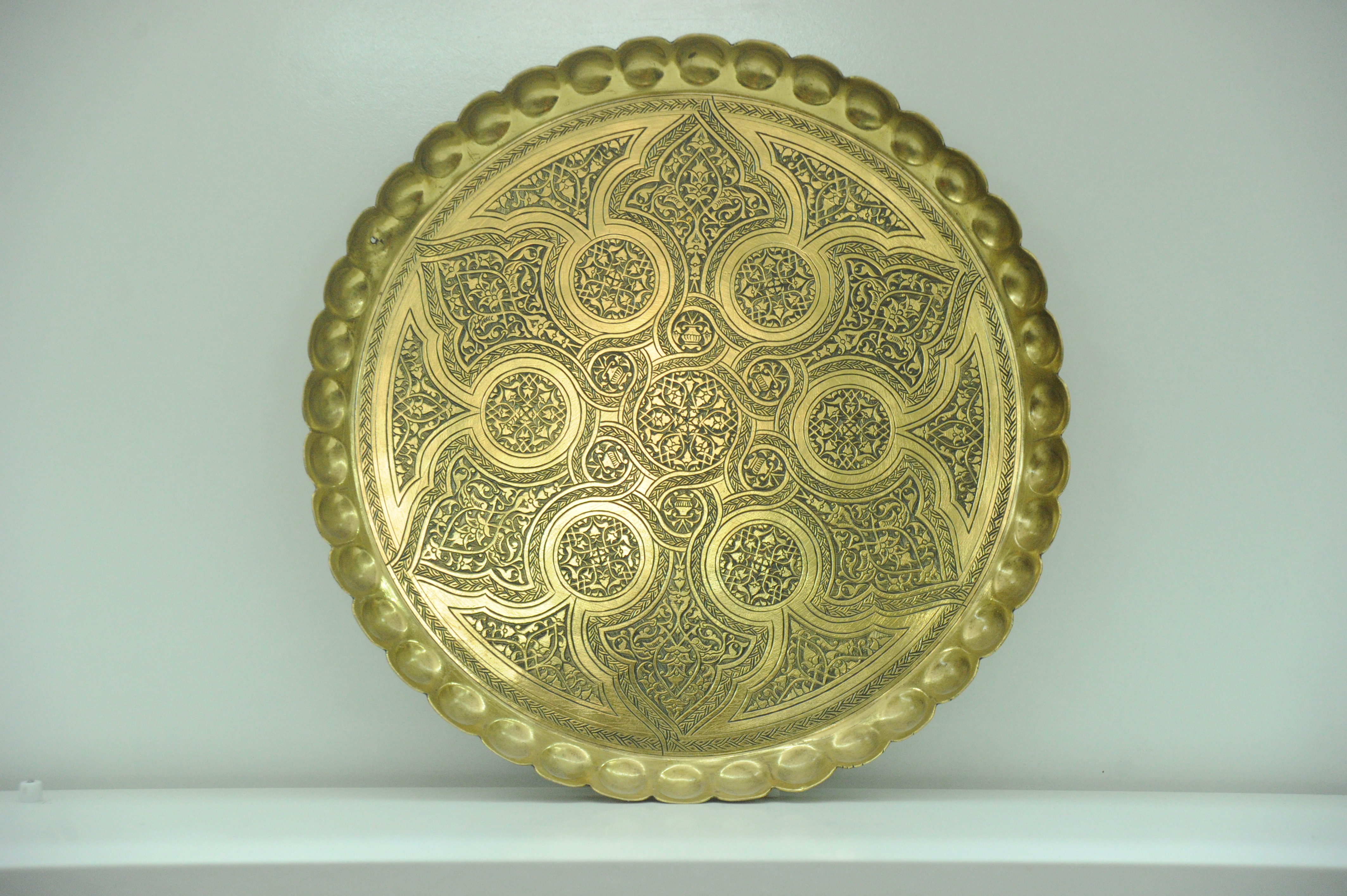
Artistic chasing is one of the most ancient crafts in the world. The most ancient products belong to the "Bronze Age". On the territory of Central Asia, this refined art form reached its peak in the 15th century - during the reign of Timur and the Timurid dynasty. Until the 15th century, master chasers used ordinary bronze for work, and for more valuable products, bronze alloyed from seven metals: copper, tin, zinc, silver, gold, iron and lead. In that era, it was an expensive metal. Over time, bronze was replaced by copper and brass. Bukhara, Samarkand, Kokand, Khiva, Tashkent have long been known as centers of chased art in Uzbekistan.
Artistic chasing images
Uzbek national toys were traditionally made of clay. As a rule, these were toys-whistles (khushtak) of fabulously zoomorphic content, in the form of domestic animals - lambs, horses, dogs, elephants, birds, as well as fantastic animals - dragons and animals unknown to nature, saddled by a rider.
Uzbek national toys images
Wood carving in Uzbekistan is made on the most extensive range of products - from massive ceiling beams to tiny children's amulets. Carved wood was sometimes the only decorative element in the decoration of doors, shutters, gates, ceiling beams, columns on covered terraces. Woodcarving was also widely used in the manufacture of household items, coasters, chests for folding blankets, lockers, caskets, pencil cases, elegant low tables khan-tahta, national musical instruments, as well as decorative multifaceted tables, bedside tables, which were in great demand among the European population of cities. in the second half of the 19th and early 20th centuries. The main centers of wood carving in Uzbekistan are Khiva, Kokand, Tashkent.
Wood carving images
Ceramics - One of the most ancient and most interesting types of applied art in Uzbekistan is artistic ceramics. Its first specimens discovered by archaeologists on the territory of the republic date back to the times of the deepest antiquity. These are lyagan dishes, spherical bowls and cash desks, vases, jugs, korchagi-khums of various sizes - from huge to miniature, convenient for consumption and at the same time exquisite in shape. For many centuries and to this day, ceramic products are in demand. They are distinguished by high craftsmanship, the beauty of forms, the magic of ornamental solutions, the harmony of bold imagination, a sense of proportion in handling color. The works of many folk masters of ceramics entered the museum collections of Uzbekistan and foreign countries, private collections. Samarkand, Gijduvan, Shakhrisabz, Katta-Kurgan, Rishtan, Khanki and Khiva in Khorezm, Tashkent have long been known as centers of pottery art in Uzbekistan.
Ceramics images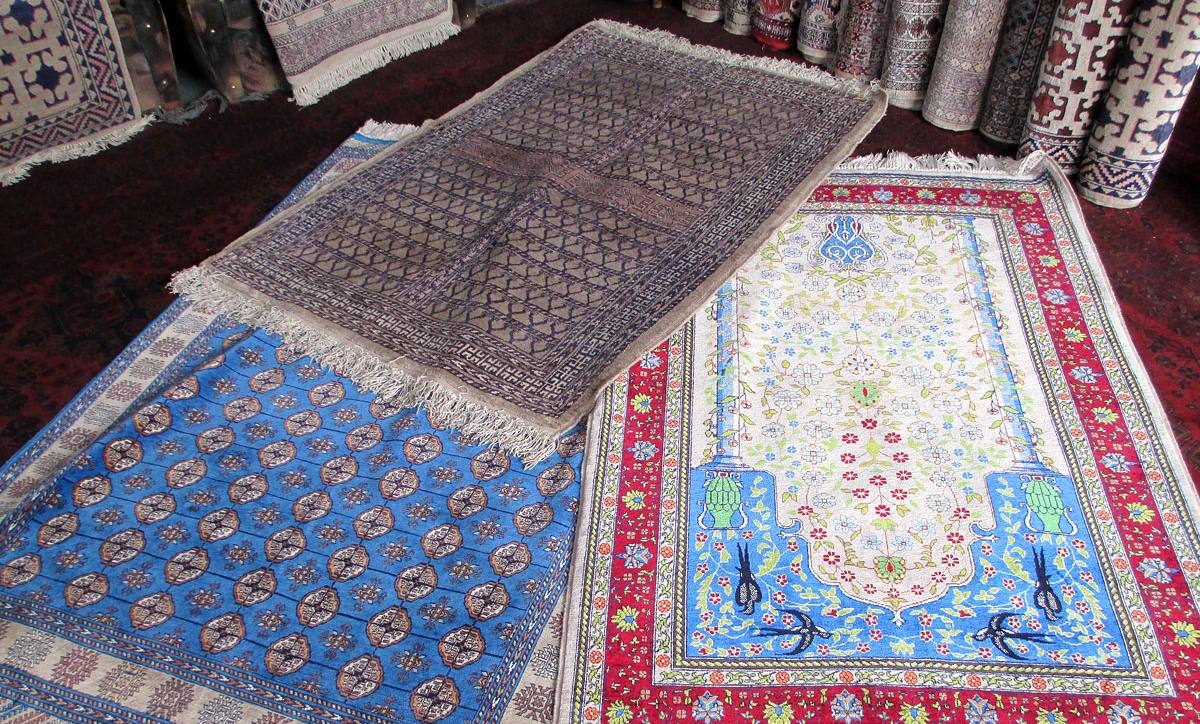
Carpet weaving is one of the oldest types of folk arts and crafts in Uzbekistan. In past centuries, carpets were very expensive and served as a luxurious decoration in the chambers of rulers and nobility. And today in Uzbekistan, the carpet is a symbol of prosperity and home comfort. At an Uzbek wedding, a carpet is an obligatory gift for newlyweds. Sketches of ancient national drawings, which traditionally carry Central Asian symbols, are carefully preserved in carpet weaving centers. Along with industrial carpet factories (Khiva, Tashkent, Samarkand, Bukhara, Fergana Valley), there are many small carpet workshops in almost all regions of Uzbekistan, where craftswomen weave carpets by hand. Home carpet weaving is also developed.
Carpet weaving images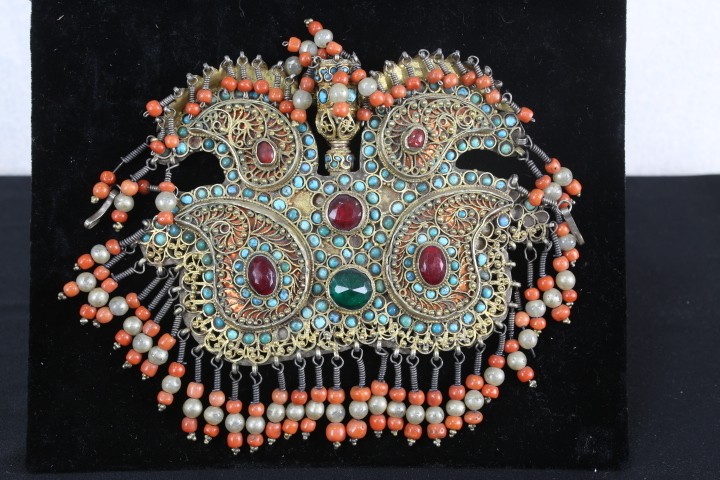
Jewelry art - the art of creating beautiful jewelry from precious metals and stones that has been passed down by Uzbek jewelers from generation to generation for thousands of years. This is one of the oldest crafts on earth, which has always aroused admiration and reverence.
The earliest jewelry found on the territory of Uzbekistan dates back to the 12th century BC, when there was no Bukhara, no Tashkent, no Samarkand. The oldest find was discovered at the head of the Chirchik River. The burial ground contained bronze bracelets depicting cosmological spirals. No less interesting is the Amu Darya treasure, which was found at the headwaters of the Amu Darya River and is a unique product of Bactrian jewelers who lived in the 5th century BC.
A truly sensational find is the treasure from the settlement of Dalverzintepe in the Surkhandarya region: a huge amount of gold and silver jewelry inlaid with precious stones was found here, the total weight of which was 32 kilograms.
Jewelry art images
Gold embroidery in Uzbekistan reached its peak in the XIX century. Bukhara was the center of gold embroidery industry. From literary sources it is known that in the 2nd half of the XIX century in the residence of the Emir of Bukhara, Arke, there was a large court workshop of gold embroiderers. In addition, more than 20 large private workshops were already functioning during these years. Historical materials testify that mainly men were engaged in the gold-embroidery craft during this period. But if there were too many orders, then women, close relatives of the masters, often acted as assistants.
Gold embroidery images
Artistic miniature is a special kind of fine art. Since ancient times, the miniature was considered in the East as part of handwritten books and manuscripts, illustrating texts. Small bright colorful pictures covered with lacquer decorated the interiors of palaces and rich houses. Kamolidinn Behzod (1450-1536) is considered to be the ancestor of the Uzbek miniature. His works are considered classics and are kept in many museums around the world. There is a miniature museum in Tashkent named after Bekhzod.
Artistic miniature images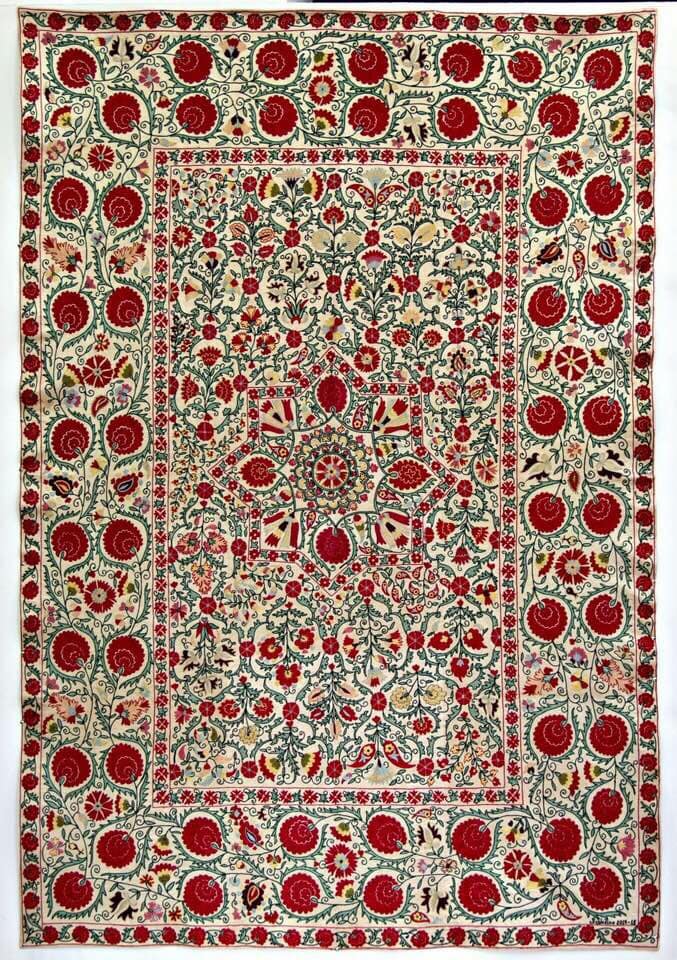
Artistic embroidery is a traditional art of the peoples of Uzbekistan. Embroidery with multi-colored cotton, silk and even gold threads adorned traditional Uzbek clothes, robes, hats, wedding dresses, skullcaps, prayer and wall rugs, horse blankets, pillowcases, bedspreads, tablecloths, curtains, tapestries. Many large-format fabrics (silk, velvet or cotton) decorated with embroidery are called suzani. From Farsi (Persian) suzane is translated as embroidered with a needle. The main centers of suzani in Uzbekistan are Shakhrisabz, Bukhara, Samarkand, Khiva, Nurata, Urgut, Gijduvan, Ferghana Valley. The patterns and ornaments of each region differ in detail and color.
Artistic embroidery images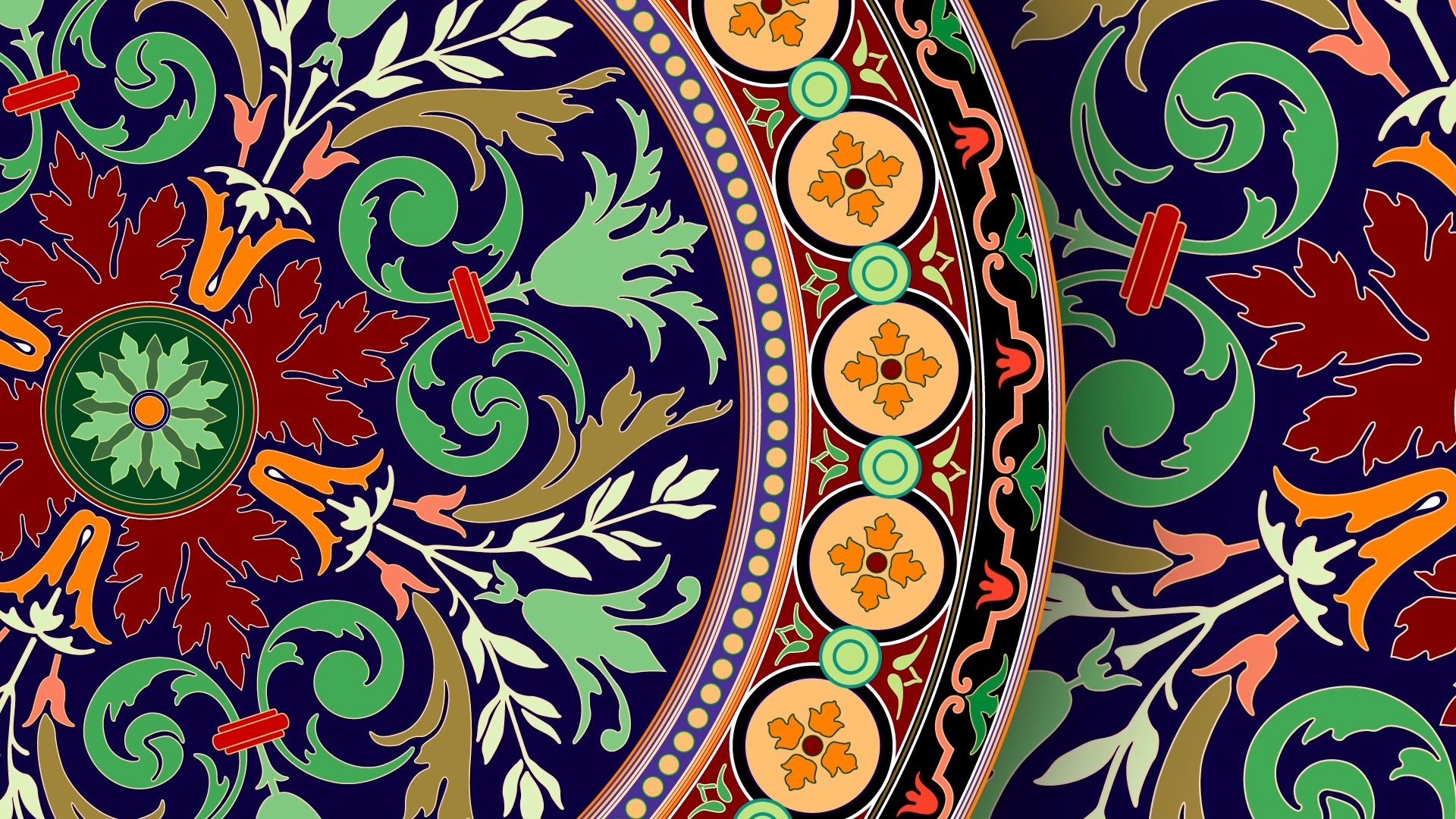
Since childhood, residents of Uzbekistan have lived in a special environment where bright colors are familiar, and the variety of patterns is amazing. Ornament reigns everywhere here. It can be seen everywhere: in interiors, in the patterns of architectural monuments, in the design of dishes, clothes, bed linen.
Needle-embroidered bedspreads are important in the culture of Central Asia. A girl who has reached the age of fourteen begins to embroider a large two-meter suzane for her wedding day. The Uzbek wedding veil is called "gulkurpa" and it is decorated with a blooming garden. One curl should always remain unfinished so that there is someone in the family to continue the embroidery.
However, the embroidered patterns differ in their peculiarities in different regions of Uzbekistan. For example, in Samarkand, you can see the Sogdian crimson rosette surrounded by rings of leaves, and the pattern of Bukhara suzanes from vortex rosettes resembles the ancient blankets of Sogda with solar signs, where the entire field is perceived as the universe.
If you want to see something special, then pay attention to the bright diamond-shaped ornament of khan atlas, which you will not be able to get out of your head or confuse with something.
The national ornament contains a creative union of religion and culture, which create a magical meaning reflecting the course of human life.
National ornament images